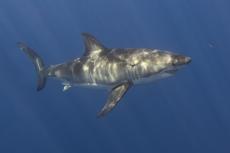Human Activities Threaten Marine Ecosystems: A Call for Urgent Action
Human activities are placing immense pressure on marine ecosystems, contributing to the decline of coastal habitats and increasing the extinction risk for many species. Both land-based and marine activities, combined with the impacts of climate change, are leading to significant shifts in marine ecosystems and disrupting the balance of life in our oceans. With marine biodiversity at risk, scientists are calling for swift and decisive conservation efforts to protect the services these ecosystems provide, which are essential to human survival.
Global Call for Action
The Kunming-Montreal Global Biodiversity Framework has emphasized the need to urgently address the growing risk of species extinction and ecosystem collapse. The framework calls on global leaders to take steps to reduce human-induced stressors, improve ecosystem integrity, and ensure the sustainability of nature’s contributions to people.
One key aspect of this global effort involves understanding how human activities are affecting marine biodiversity. A clear picture of where and to what extent these pressures exist is essential for designing effective conservation strategies. Now a new study has modelled the effects of human impact upon 21,159 marine animal species and the results are alarming.
Understanding the Impacts of Human Activity
Human impact models have been developed to assess the combined effects of various stressors, such as habitat destruction, overfishing, and pollution, on different species and marine ecosystems. For example, a coral reef in the Caribbean may face similar pressures to one in Indonesia, but the specific species and communities within these reefs may react differently to these stressors. A more detailed, species-based approach allows scientists to assess the unique vulnerabilities of different species, providing crucial information for conservation efforts.
Species-Based Conservation
Traditional conservation models have often focused on protecting habitats, but new species-based approaches are shedding light on the unique risks to individual marine animals. By analysing the traits and roles that specific species play within their ecosystems, scientists can pinpoint which species are most vulnerable to extinction and which are critical to ecosystem functioning. This shift in focus may lead to more targeted conservation efforts that protect not just the ecosystems but also the species that help them thrive.
Global Marine Protection Goals
The Kunming-Montreal Framework sets an ambitious goal: to protect at least 30% of the world’s oceans by 2030. Marine protected areas (MPAs) have proven to be an effective tool in conservation. These areas, especially when they are fully protected, can safeguard ecosystems from human activity and help species recover. However, not all MPAs are created equal. Some regions may benefit from targeted protections rather than blanket restrictions, balancing ecological benefits with the social and economic needs of local communities.
The situation is such that even marine ecosystems and their inhabitants located far from human activities can be badly affected.
Climate Change Adds Complexity
Climate change is compounding the effects of human activities on marine life. Rising sea temperatures, ocean acidification, and more frequent extreme weather events are driving species out of their natural habitats. Even with significant reductions in global emissions, climate stressors are expected to worsen in the coming years. Local conservation efforts, such as limiting fishing and reducing coastal pollution, can help marine species adapt to these changes.
Prioritizing Vulnerable Species
Scientists are now able to map areas of the ocean where species face the highest risk of extinction due to overlapping climate and human-induced stressors. These maps highlight “hotspots” where immediate conservation action is necessary to prevent further biodiversity loss.
In some cases, local species are more vulnerable to stressors than previously thought, posing a significant risk to the ecosystem as a whole. Targeted conservation strategies that focus on these species could be more cost-effective and politically feasible than larger-scale restrictions.

The Path Forward
The road ahead for ocean conservation is complex, but the tools to address these challenges are within reach. By combining species-based and habitat-based approaches, scientists are providing policymakers with the information needed to make informed decisions about marine protection. The time for action is now, as the impacts of climate change and human activity continue to intensify. Protecting our oceans will not only save species but also ensure the continued provision of the ecosystem services required for life to continue on Earth.
Conclusion
The fight to protect our oceans is a race against time. With the Kunming-Montreal Framework providing a global roadmap, governments, scientists, and conservationists must collaborate to preserve marine ecosystems before it’s too late. Effective, targeted action today will determine whether future generations inherit healthy oceans—or a barren seascape devoid of life.





























